Last updated: March 1, 2022
Article
These Boots Aren't Made for Walking
“Don’t settle for style. Succeed in substance.”—Wynton Marsalis
The 1970s was a decade of sweeping social and economic change in the United States. The era of disco and bellbottom jeans also built upon laws and programs developed in the 1960s to provide increased opportunities in the workplace and new economic freedoms for women.
Ironically, this was also the decade where NPS women’s uniforms were least like those of the men. Since 1943 when separate uniform regulations were created, women’s uniforms were made from standard green uniform fabrics. That all changed with the 1970 women’s uniform.
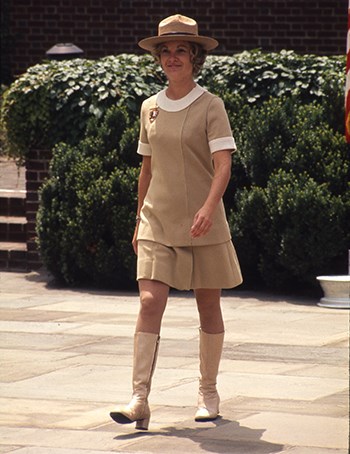
Putting the Boot in
The beige 1970 uniform was not well received by most NPS women. It was a significant departure from the men’s uniform. It was also an impractical color and fabric for anything except light office work.
The so-called "go-go boots" (please stop calling them that!) are probably the most controversial aspect of the NPS uniform after The Myth of the Men’s Uniform. Many think NPS women wore them in the 1960s. Real go-go boots were invented in the 1960s, of course, but let’s be honest—government agencies don’t move that quickly, especially when it comes to fashion. If you must talk about go-go boots (and you really don’t need to), please remember that in the NPS we are only talking about the period from 1970 to 1974. That’s right—just four years out of more than a century.
The idea of go-go boots (seriously, stop) as part of the beige uniform has certainly remained part of the NPS collective consciousness, helped along by internal and external publications that build on the theme. Some individuals have vivid memories of female rangers wearing white go-go boots or refer to the boots they themselves wore as go-go boots. Some NPS women today even long for a return to that fashionable (if somewhat fictional) look.
Why fictional? Invented in the mid-1960s as a fashion boot, the original go-go boots were white, plastic, low heeled, and mid-calf in height. (OK, some of the early high-fashion ones were patent leather, but those weren’t affordable for most women.) They evolved to include knee-high, square-toed boots with block heels. In the 1970s, they were made from various colors of vinyl and other plastics.
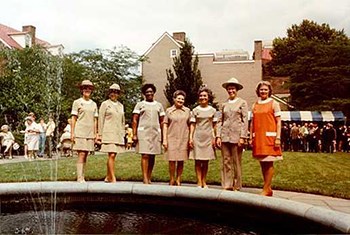
So how does that description square with the NPS uniform? We know that women provided their own footwear based on general requirements, rather than purchasing a standard shoe or boot. With no uniform catalogs to consult, that leaves the NPS uniform standard and historic photographs to help settle the question.
The uniform standard states that optional boots “should be simple in styling, comfortable . . . color should be beige or tan to light brown in the same color family as basic uniform in a smooth or lightly grained leather (not suede or reptile).”
Although the standard does not specify boot height, it does specify color (beige to light brown) and material (leather). Therefore, white boots, vinyl boots, and certainly white vinyl boots were not part of the official NPS women’s uniform. While we think this should end the matter, we know you still aren’t convinced. After all, why do so many people think that white go-go boots (last time, please) were part of the women’s uniform?
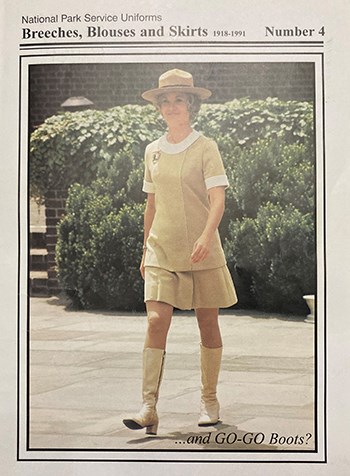
Ranger Lore and “Those Boots”
In the NPS we call it “ranger lore” when something is repeated over and over again when it isn’t true or hasn’t been verified against current knowledge in a couple of decades. Here’s where it gets a bit uncomfortable for us, because former NPS History Collection staff helped the story along in two important ways.
The photograph cited as evidence is on the cover of the book National Park Service Uniforms: Breeches, Blouses and Skirts, 1918-1991 by R. Bryce Workman. It was published by the NPS History Collection at Harpers Ferry Center in 1998 (yes, that’s us). The cover shows Marion Durham modeling the new uniform with boots at Independence National Historical Park in 1970. Unfortunately the tagline “. . . and GO-GO Boots?” is also on the cover. So, yeah, actually calling them “you know what” on the cover of the book certainly helped spread the idea. It’s particularly unfortunate as Workman wrote to Durham before making her the cover girl. On July 31, 1996, she responded, “My concern [about using this image on the cover] is a feeling that since our preferred objective was to have the women wear the same uniform as the men, the “interim” uniform I modeled doesn’t reflect the true picture of our efforts.” She also emphatically noted, “I detested everyone calling them ‘go-go boots’.” He used the tagline anyway.
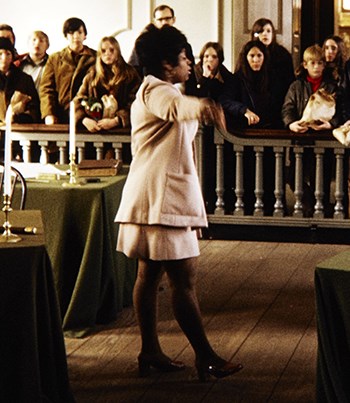
It also doesn’t help that, as printed, the boots in the photograph look shiny and off-white in color (we can see that). However, the original photograph and others taken the same day clearly demonstrate that they were tan. Oh, yeah—and we asked Marion Durham. They were her personal boots so she should know, right?
Some of you NPS folks may be saying “Wait a minute! I’ve seen the NPS Uniform Collection and there were definitely white vinyl boots there.” You’re not crazy. Yes, they were there (note the past tense). Remember how we said the NPS History Collection staff helped the story along? Well (this is embarrassing to admit) the white go-go boots (and yes, they really were go-go boots!) had no connection to the NPS. They were purchased a couple of decades ago at a garage sale to display with the uniforms. There. We said it. Sorry! (This is why we care about provenance—where objects come from matters!).
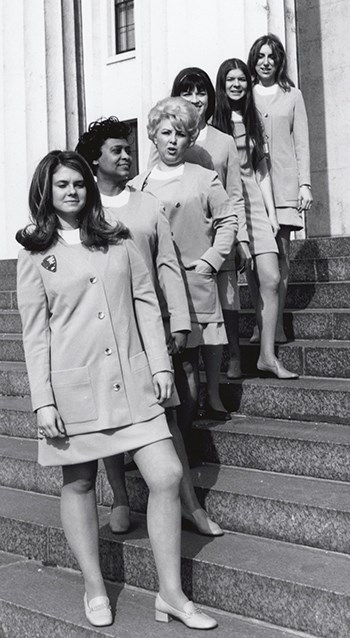
Okay, we feel you most of you are coming around, but we know there are some diehards out there asking, “What about the rest of the photographs?” Well, besides the photos of Marion Durham from that one day at Independence, only one other photograph found in the NPS History Collection shows a woman wearing any type of boot—and she’s riding a horse. What can be seen of her boots suggest cowboy-type boots (which also makes sense). All the other photos show women wearing shoes—or the photos do not show their footwear.
Does the lack of photographs mean that no woman ever wore “those boots?” Of course not. Could there be other photos in other park museum collections or personal collections we haven’t seen? Sure, we admit we haven’t seen them all. In fact, if you’ve got some, we’d love to see them. (Seriously, contact our archivist).
Does the fact that the regulations call for tan or light brown leather boots mean everyone followed the rules? As if! NPS directors and regional directors periodically issued memos reminding employees to maintain their uniform standards, and yet we still have lots of photos that demonstrate they didn’t. (In fact, in that cover photo, Durham is even wearing the wrong hat for that uniform!). Didn’t superintendents sometimes authorize local changes to the uniform dress code? Absolutely.
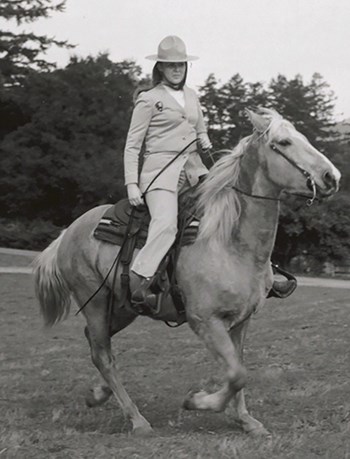
While it remains possible that they were worn somewhere by someone, they were definitely not part of the official NPS uniform standard as described. Until and unless more instances are documented, however, we should remember that as far as the boots go, we are only talking about one day in four years—and that was a “fashion show” rather than a typical work day.
One Step Forward?
Why have we spent so much time trying to debunk the myths of period, color, and material regarding those boots? Well, we do like historical accuracy, but even we admit that if boots are just a fashion statement, it probably doesn’t matter. But are they?
Consider the context of the women in the NPS. Those kinds of boots may have been mod, hip, and fashionable, but they certainly would not have been practical for many jobs women in the NPS wanted to do. Given the national conversation in the 1970s regarding women’s liberation and equal rights, do the boots allow the conversation to focus on fashion over the substance of what NPS women wanted and accomplished?
Ask yourself why the women’s uniform that was least like that of the men—and which was only in use for four years—still gets so much attention? Yes, it was a big departure for the NPS. But why does that attention focus so much on (optional) boots that are synonymous with 1960s and 1970s women’s sex appeal? Hmm, we may have answered our own question . . .
Explore More!
To learn more about Women and the NPS Uniform, visit Dressing the Part: A Portfolio of Women's History in the NPS.
This research was made possible in part by a grant from the National Park Foundation.
